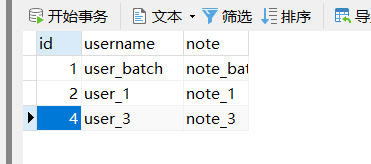Spring Boot 异步任务及定时任务
一、异步线程池
1、简介
平时我们开发的应用一般都是同步应用,也就是一个请求都是在同一个线程中运行,但是有时候可能需要异步,也就是一个请求可能存在两个或者两个以上的线程。
在实际的场景中,如后台管理系统,有些任务需要操作比较多的数据进行统计分析,典型的如报表,需要去生成。而报表可能需要访问的是亿级数据量并且进行比较复杂的运算,这样报表的生成就需要比较多的时间了。这种情况就很适合使用异步任务。
Spring Boot 在官方文档的核心特性中介绍过: Task Execution and Scheduling
2、分析
根据官方文档所示,想要使用异步任务需要为应用开启异步功能,最简单的方法是使用两个注解, @EnableAsync 和 @Async:
@EnableAsync可以放在主启动类上或者需要调用异步方法的类上@Async放在想要让其异步执行的方法上
当应用检测到开启了异步功能,但是没有提供 Executor,那么 Spring Boot 会自动为我们装配异步任务执行器(一个名为 taskExecutor,类型为 ThreadPoolTaskExecutor 的线程池)。
如果想要在上下文中注入开发者定制的 Executor,同时应用使用了 @EnableAsync,那么执行异步任务时会使用我们提供的线程池,但是此种情况下 Spring MVC 的异步执行线程池不会使用它,如果想让 Spring MVC 也使用定制的执行器,就另外需要提供一个 AsyncConfigurer 类型的用 @Configuration 修饰的配置类,在这个类中提供类型为 AsyncTaskExecutor,名称为 applicationTaskExecutor 的 Executor。
为了统一异步任务执行器,推荐开发者这样配置,在实现了 AsyncConfigurer 的配置类中通过覆盖方法,提供类型为 ThreadPoolTaskExecutor 的执行器,这样整个应用在执行异步任务时都会使用这个 Executor。
@Configuration
@EnableAsync
public class AppConfig implements AsyncConfigurer {
// 自定义线程池
@Override
public Executor getAsyncExecutor() {
// Custom thread pool
ThreadPoolTaskExecutor executor = new ThreadPoolTaskExecutor();
// 核心线程数(最小线程存活数量)
executor.setCorePoolSize(10);
// 最大线程数
executor.setMaxPoolSize(30);
// 阻塞队列大小
executor.setQueueCapacity(2000);
// 最大空闲时间
executor.setKeepAliveSeconds(300);
// 创建新线程时线程的名称前缀
executor.setThreadNamePrefix("---NaiveKyo-Executor");
// 拒绝策略
executor.setRejectedExecutionHandler(new ThreadPoolExecutor.CallerRunsPolicy());
// 初始化
executor.initialize();
return executor;
}
// 异常处理机制,可以自定义,这里就使用父类的方法,返回 null,表示使用默认的
@Override
public AsyncUncaughtExceptionHandler getAsyncUncaughtExceptionHandler() {
return AsyncConfigurer.super.getAsyncUncaughtExceptionHandler();
}
}有一点需要注意:AsyncConfigurer 配置类会在应用程序上下文启动之前初始化,这意味着如果在这种类型的配置类中提供 Bean,这些 Bean 将不会被某些后处理器(BeanPostProcessor)所处理。
如果非要提供 Bean,可以这样做:
- 使用
@Lazy修饰@Bean方法
当然,非必要还是另外创建一个单独的配置类去提供这些 Bean 比较好。
3、实践
前面已经提供了异步任务所需要的线程池,下面提供两个测试服务类:
需要注意的是 异步任务一般不需要返回值,如果想要返回值可以返回 Future<?>
业务类:
public interface ReportService {
void generateReport();
}
@Service
public class ReportServiceImpl implements ReportService {
@Autowired
private AsyncService asyncService;
@Override
public void generateReport() {
System.out.println("=== 请求线程: 【 " + Thread.currentThread().getName() + " 】");
asyncService.generateReport();
}
}异步任务类:
public interface AsyncService {
void generateReport();
}
@Service
public class AsyncServiceImpl implements AsyncService {
@Autowired
private UserMapper userMapper;
@Async
@Override
public void generateReport() {
System.out.println("报表线程名称: " + "【 " + Thread.currentThread().getName() + " 】");
}
}测试类:
@RestController
public class HelloController {
@Autowired
private ReportService reportService;
@RequestMapping(value = "/report", method = RequestMethod.GET)
public String report() {
this.reportService.generateReport();
return "ok";
}
}测试效果:

4、异步任务结合事务
如果需要在一个事务中开启另一个异步事务,个人觉得还是将异步事务的传播机制设置为 REQUIRES_NEW 比较好,这样异步事务可以有自己的隔离级别和锁,如果出了错也不会影响父事务。
用户实体:
@Setter
@Getter
@ToString
public class User {
private String username;
private String note;
public User(String username, String note) {
this.username = username;
this.note = note;
}
}业务类:
public interface OtherService {
// 批量插入用户的业务
int insertUsers(List<User> userList) throws Exception;
}
@Service
public class OtherServiceImpl implements OtherService {
@Autowired
private AsyncService asyncService;
@Autowired
private UserMapper userMapper;
@Override
@Transactional(isolation = Isolation.READ_COMMITTED, propagation = Propagation.REQUIRED)
public int insertUsers(List<User> userList) {
this.userMapper.insertUser(new User("user_batch", "note_batch"));
for (int i = 0; i < userList.size(); i++) {
this.asyncService.insertUser(userList.get(i), i);
}
return 1;
}
}异步任务:
public interface AsyncService {
// 插入用户数据
void insertUser(User user, int i);
}
@Service
public class AsyncServiceImpl implements AsyncService {
@Async
@Override
@Transactional(isolation = Isolation.READ_COMMITTED, propagation = Propagation.REQUIRES_NEW)
public void insertUser(User user, int i) {
if (i == 0)
this.userMapper.insertUser(user);
if (i == 1) {
this.userMapper.insertUser(user);
throw new RuntimeException("============= 出错 =============");
}
this.userMapper.insertUser(new User("user_3", "note_3"));
try {
Thread.sleep(2000);
} catch (InterruptedException e) {
e.printStackTrace();
}
}
}测试 Controller:
@Controller
public class AsyncController {
@Autowired
private OtherService otherService;
@GetMapping("/insert")
@ResponseBody
public String batchInsertUser() throws Exception {
ArrayList<User> users = new ArrayList<>();
users.add(new User("user_1", "note_1"));
users.add(new User("user_2", "note_2"));
this.otherService.insertUsers(users);
return "ok!";
}
}这里我们在第二次执行异步任务时抛出异常,最终结果就是只会向数据库插入父事务和第一次异步事务的数据:




